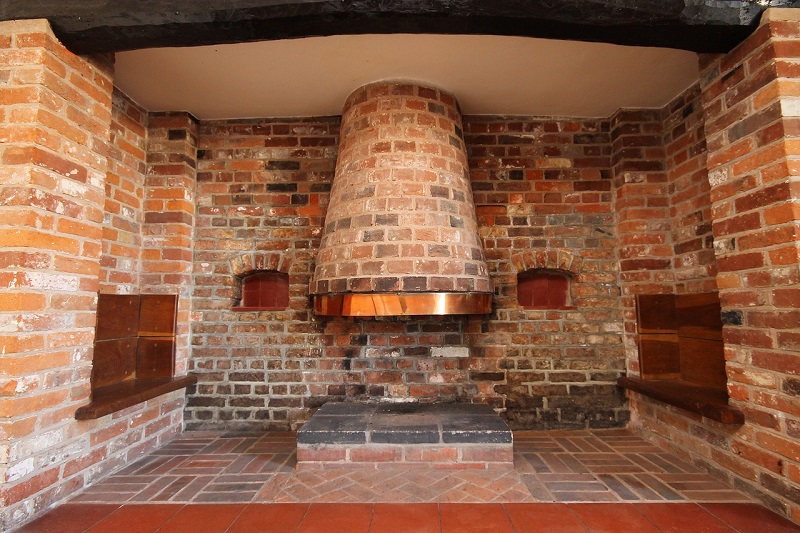Inglenook

|
| This modern fireplace has an inglenook on either side incorporating seating. |
From the medieval period onwards, the fireplace took pride of place in houses and farmhouses and was typically a large-scale affair. An inglenook (derr. Gaelic ‘aingael’ – fire or light, and Old English ‘ingle’ – fireplace) was a recessed hearth area (or chimney corner) adjoining a fireplace.
Bigger fireplaces would have recesses large enough for storing food (particularly to keep salt dry, as well as cooking implements, etc) and/or they could house seating. The natural warmth of the spot became a favoured place to cook and to sit and gather; it was therefore a precursor to the modern kitchen.
When kitchens eventually became separate rooms, inglenooks began to be incorporated into living spaces as cosy, warm places to sit.
In addition to their appearance in traditional building, inglenooks enjoyed a brief renaissance during the Arts and Crafts movement but declined following the introduction of central heating.
[edit] Related articles on Designing Buildings Wiki
IHBC NewsBlog
Old Sarum fire in listed (& disputed) WW1 Hangar - Wiltshire Council has sought legal advice after fire engulfed a listed First World War hangar that was embroiled in a lengthy planning dispute.
UK Antarctic Heritage Trust launches ‘Virtual Visit’ website area
The Trust calls on people to 'Immerse yourself in our heritage – Making Antarctica Accessible'
Southend Council pledge to force Kursaal owners to maintain building
The Council has pledged to use ‘every tool in the toolbox’ if urgent repairs are not carried out.
HE’s Research Magazine publishes a major study of the heritage of England’s suburbs
The article traces the long evolution of an internal programme to research 200 years of suburban growth
IHBC Context 183 Wellbeing and Heritage published
The issue explores issues at the intersection of heritage and wellbeing.
SAVE celebrates 50 years of campaigning 1975-2025
SAVE Britain’s Heritage has announced events across the country to celebrate bringing new life to remarkable buildings.
IHBC Annual School 2025 - Shrewsbury 12-14 June
Themed Heritage in Context – Value: Plan: Change, join in-person or online.
200th Anniversary Celebration of the Modern Railway Planned
The Stockton & Darlington Railway opened on September 27, 1825.
Competence Framework Launched for Sustainability in the Built Environment
The Construction Industry Council (CIC) and the Edge have jointly published the framework.
Historic England Launches Wellbeing Strategy for Heritage
Whether through visiting, volunteering, learning or creative practice, engaging with heritage can strengthen confidence, resilience, hope and social connections.













